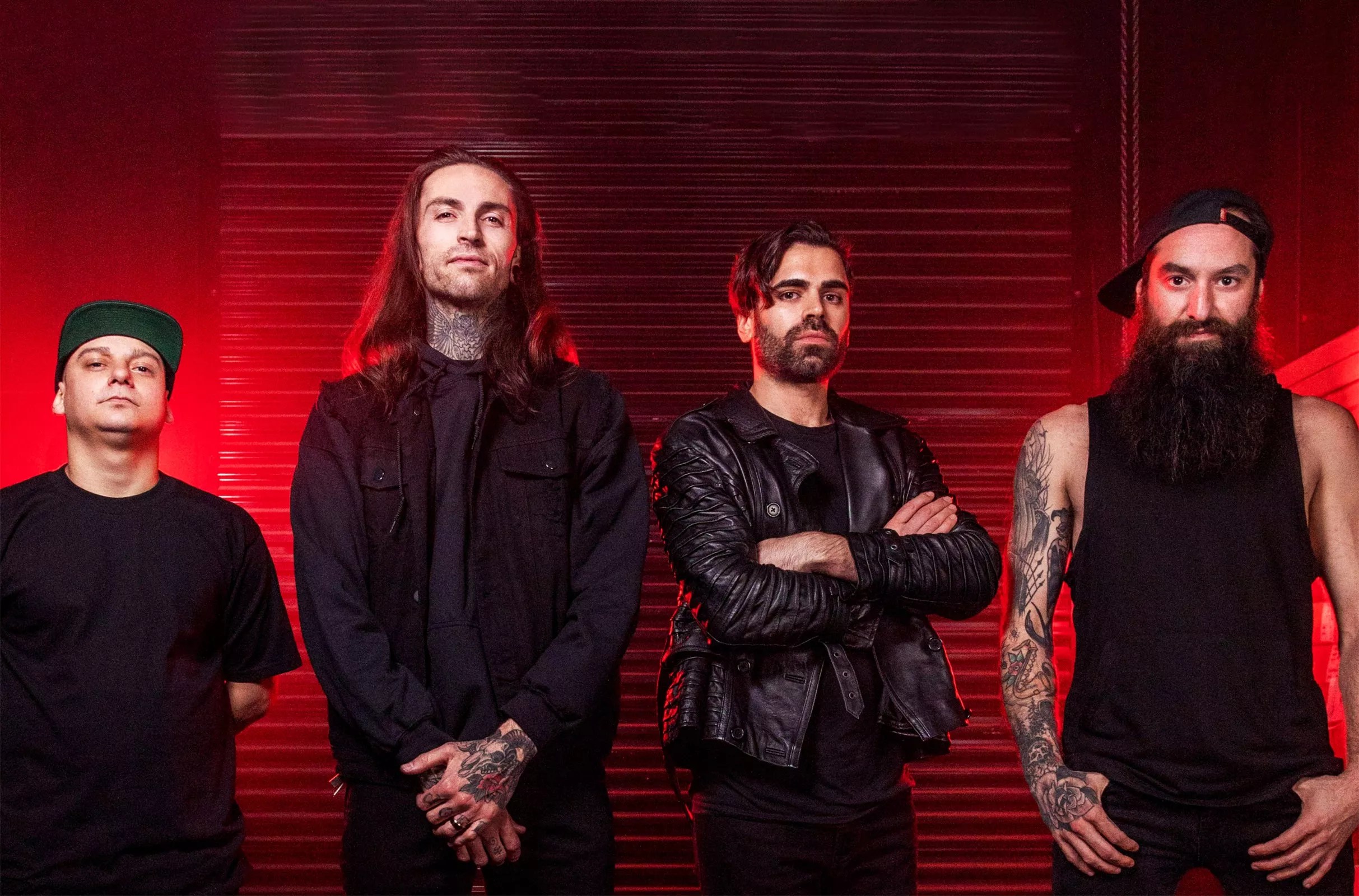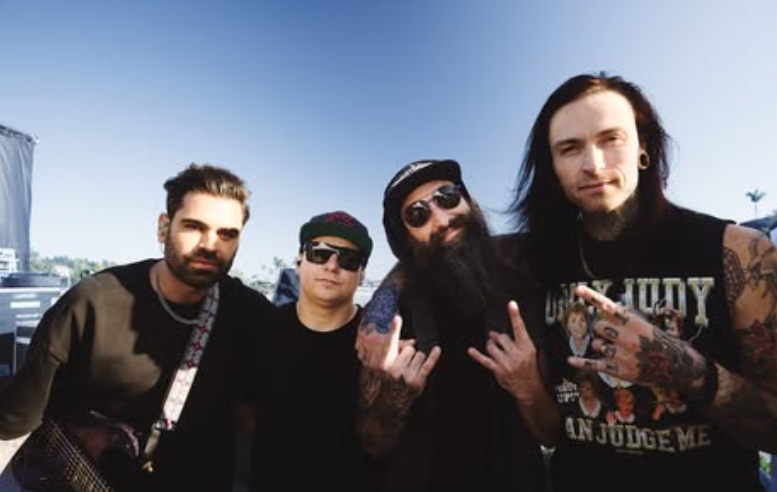
Ticketmaster

Audio By Carbonatix
Aurorawave’s music is the sound of open minds meeting open space: a deep reggae pocket that suddenly detonates into a breakdown, a final chorus blooming with harmonies you didn’t know were hiding there.
I’m a metalhead who loves reggae, which usually means I live in two different rooms at the party. But Aurorawave knocked down the wall. Their records glide from heavy metal’s aggressive breakdowns, intricate arrangements, and chugging guitar riffs to reggae’s shimmering off-beat delays, smooth grooves, and positive, emotionally charged lyricism. Live, they translate that exact feeling — vibe and velocity in one body. It isn’t a mash-up; it’s a point of view. “Bring your true self and the crowd meets you there,” frontman Nathan tells me, a line that doubles as their mission statement and their live-show promise.
Motion is the throughline, musically and logistically. The band is bi-coastal — Nathan and the drummer in California, bassist and guitarist in New York and New Jersey — so the classic garage rehearsal is a rare luxury. Instead, they’ve engineered their own system, and the payoff shows up on stage.
In the studio, Aurorawave’s sonic identity crystallized around a move that producer Matt Keller encouraged: the “final-chorus bloom.” Technically, it’s layers—stacked harmonies, a hook flipped, counter-melodies threading back in. Emotionally, it’s structured as a story. A song that begins in one place, travels to another, and then resolves with the feeling of a time-lapse flower opening; everything you’ve heard, but fuller.
Aurorawave’s second album, “Monument,” was released in August 2025. They will be playing in Phoenix on October 15. I had the chance to talk with frontman Nathan Aurora ahead of the show.
Phoenix New Times: With the members around the country, long-distance bands have to solve a lot. Any logistical nightmares?
Nathan: Not nightmares. Traditional rehearsals are harder; we don’t get to jam in a garage as much as we’d like. But we’ve got a system: our gear is centralized, routes are planned, and before every tour we fly in a day or two early to rehearse in the first city. It’s more hustle, but it works.
You came up in the MySpace era. How does that hustle shape how you operate in 2025?
We’re using technology to our advantage in that sense. And that’s a super cool aspect of it, but it is. It’s kind of similar, just like an evolved version, you know, because back in the day, it wasn’t very MySpace heavy. Like before Spotify, before all this stuff, it was a MySpace music player, which, in my opinion, really ruled. Bands could upload songs and build a real following. Now we use new tools, but the spirit is similar: DIY, direct to fans, keep releasing.

The name carries history. What’s the story behind “Aurorawave” and the aesthetic?
It started with my old band, Aurora—one word—during the MySpace days. It was an unspoken rule to put the band name in your handle, so I was “Nathan Aurora,” Mike Aurora, Luis Aurora… I never changed mine. It became a stage name. When I started this band, I wanted continuity across my creative projects — music, my clothing company, Popunko’s Reggae, podcasts — without confusing fans. AuroraWave ties it all together and signals, “Yep, that’s Nathan’s music.”
Your live show translates the studio blend—reggae offbeat delays, breakdowns—into something visceral. Is there a trick behind making that coexist on stage?
It’s organic and intentional. The guys bring metal-band energy, but we lock into real reggae grooves. I also program lights and make video content, so when we have video walls, the show feels cinematic. We care a lot about the live set.
The October Phoenix show is very anticipated among your fans here! Now that “Monument” has had time to breathe, which song took on a new life once crowds got involved?
It’s early—we’re playing a bunch of new tracks on this run — but “Suffocate” surprised me. It’s probably our most reggae song, but it still hits heavy. I thought it might be polarizing. People gravitated to it. It kind of sums up the band in one track.
You just played Louder Than Life. I love that fest. How did a big metal crowd react to the reggae side live?
I put “Suffocate” in the set, not knowing what would happen when the groove got deep. Looking out and seeing metalheads vibing, chilling, then diving back into breakdowns — that was sick. And I made sure to throw that one in the set list. And I really didn’t know how people were going to react when we get into the kind of deeper reggae groups. But it was really cool to look out at the crowd and see all these metalheads kind of start vibing and chilling out a little bit before we brought them back into breakdowns and headbanging.
You don’t often relate the reggae and metal crowds. Any moment where you could see you’d won over a crowd that didn’t know what reggae-core was?
Totally. And reggae and metal are probably the most extreme on both sides. We played a really deep hippie festival near the Colorado–New Mexico border, in Aztec, New Mexico. No cell service, imagine kaleidoscope tapestries everywhere, people barefoot doing ceremonial meditation and stuff. I’m thinking, “Let’s see what happens when we drop the heavy stuff.” They loved it. One of my favorite shows ever. There’s something to be said about going to these concerns with no expectations. If people come in open-minded, they get it. Bring your true self, and the crowd meets you there with an open heart.
How did you first land on reggae-core as your lane? When was that moment back in the day when you were like, ‘Oh my gosh, I love these two genres, and let’s experiment on combining them?’
It was organic. I spent five or six years in the MySpace metalcore era as a teenager, then ten years touring in a reggae band. When that ended, I kept writing. I wrote “Boiling Point.” It had reggae DNA and heavy breakdowns. I wanted my friends, The Ghost Inside, to feature. It was too heavy for my current band, but it felt right. That song was a pivot — like, “Maybe this is the new thing.”
Producer Matt Keller worked on both albums. What’s one idea he pushed that felt risky in the moment but now feels essential to the Aurorawave sound?
Nothing feels too risky for us — what we do is wild by default, so… fuck it, try it. The big thing Matt pushed was exploding on the final chorus. Layer the vocals, flip the hook, tie the whole journey together. I always wanted to do that. He encouraged it and showed me the ropes. Now you hear it on every Aurorawave song. The goal is a journey: start somewhere, go somewhere else, resolve it. The last chorus should feel like everything blooming at once. Listen close, there’s a lot happening there.
Formed in 2010, the band features Tanner Arebalo on drums, whose high-energy performances lay the foundation for the band’s rhythm; Mike Mocerino on guitar, bringing intricate riffs and soaring melodies; and Ray Worrick on bass.
Aurorawave plays at 8 p.m. on October 15 at Valley Bar. Tickets start at $20.